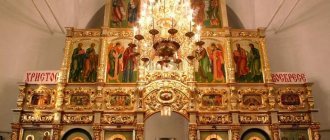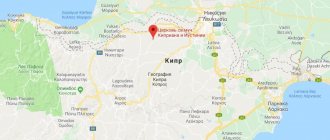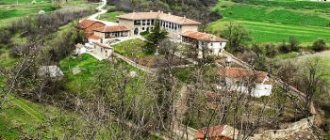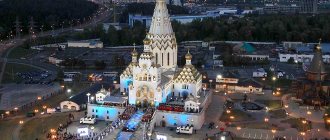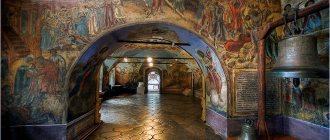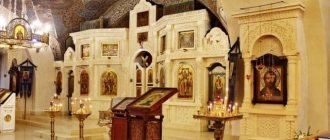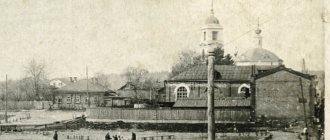Mir
Ukraine Donetsk region Svyatogorsk Holy Dormition Svyatogorsk Lavra Map is loading…
{"format":"leaflet","minzoom":false,"maxzoom":false,"limit":50,"offset":0,"link":"all","sort":[""], "order":[],"headers":"show","mainlabel":"","intro":"","outro":"","searchlabel":"\u2026 \u0441\u043b\u0435\ u0434\u0443\u044e\u0449\u0438\u0435 \u0440\u0435\u0437\u0443\u043b\u044c\u0442\u0430\u0442\u044b","default":"","import-annotation":false,"width ":"auto","height":"350px","centre":{"text":"","title":"""link":"""lat":49.0280910000000034187905839644372463226318359375,"lon": 37.5675719999999984111127560026943683624267578125,"icon":""},"title":"","label":"","icon":"","lines":[],"polygons":[],"circles":[ ],"rectangles":[],"copycoords":false,"static":false,"zoom":8,"defzoom":14,"layers":["OpenStreetMap"],"image layers":[] ,"overlays":[],"resizable":false,"fullscreen":true,"scrollwheelzoom":true,"cluster":false,"clustermaxzoom":9,"clusterzoomonclick":true,"clustermaxradius":80, "clusterspiderfy":true,"geojson":"","clicktarget":"","showtitle":true,"hidenamespace":false,"template":"","userparam":"","activeicon": "","pagelabel":false,"ajaxcoordproperty":"","ajaxquery":"","locations":[{"text":"\u003Cb\u003E\u003Ca href=\"/palomnik/%D0% A1%D0%B2%D1%8F%D1%82%D0%BE-%D0%A3%D1%81%D0%BF%D0%B5%D0%BD%D1%81%D0%BA%D0%B0 %D1%8F_%D0%A1%D0%B2%D1%8F%D1%82%D0%BE%D0%B3%D0%BE%D1%80%D1%81%D0%BA%D0%B0%D1 %8F_%D0%9B%D0%B0%D0%B2%D1%80%D0%B0\" title=\"\u0421\u0432\u044f\u0442\u043e-\u0423\u0441\u043f\u0435\u043d\ u0441\u043a\u0430\u044f \u0421\u0432\u044f\u0442\u043e\u0433\u043e\u0440\u0441\u043a\u0430\u044f \u041b\u0430\u0432\u0440\u0 430\u003E\u0421\u0432\ u044f\u0442\u043e-\u0423\u0441\u043f\u0435\u043d\u0441\u043a\u0430\u044f \u0421\u0432\u044f\u0442\u043e\u0433\u043e\u0440\u0 441\u043a\u0430\u044f\u041b \u0430\u0432\u0440\u0430\u003C/a\u003E\u003C/b\u003E\u003Chr /\u003E\u003Ca href=\»/palomnik/%D0%A1%D0%B2%D0%BE%D0%B9 %D1%81%D1%82%D0%B2%D0%BE:%D0%90%D0%BD%D0%BD%D0%BE%D1%82%D0%B0%D1%86%D0%B8% D1%. 0410 > 43d\u0430\u0445\u043e\ u0432, \u043f\u043e\u0434\u0432\u0438\u0437\u0430\u0432\u0448\u0438\u0445\u0441\u044f \u0432 \u043c\u043e\u043d\u0430\u0441\ u0442\u044b\u0440\u0435, 17 \u0431\u044b\u043b\u0438 \u043f\u0440\u043e\u0441\u043b\u0430\u0432\u043b\u0435\u043d\u044b \u0432 \u043b\u0438\u043a\u0435 \u0441\u0432\u044f\u0442\u044b \u0445. \n\u041f\u043e\u0441\u043b\u0443\u0448\u0430\u043d\u0438\u0435 \u0432 \u043e\u0431\u0438\u0442\u0435\u043b\u0438 \u043d\u04 35\u0441\u0443\u0442\u0431 \u043e\u043b\u0435\u0435 \u0441\u043e\u0442\u043d\u0438 \u0447\u0435\u043b\u043e\u0432\u0435\u043a \u0431\u0440\u0430\u0442 \u0438\u0438. \u041f\u0440\u0438 \u043e\u0431\u0438\u0442\u0435\u043b\u0438 \u0435\u0441\u0442\u044c \u0433\u043e\u0441\u0442\u0438\u043d \u0438\u0446\u0430 \u0434\u043b \u044f \u043f\u0430\u043b\u043e\u043c\u043d\u0438\u043a\u043e\u0432.","title":"\u0421\u0432\u044f\u0442\u043e-\u0423\u0441\u043f \u0435\ u043d\u0441\u043a\u0430\u044f \u0421\u0432\u044f\u0442\u043e\u0433\u043e\u0440\u0441\u043a\u0430\u044f \u041b\u0430\u0432\u0 440\u0430","link":" ","lat":49.0280910000000034187905839644372463226318359375,"lon":37.5675719999999984111127560026943683624267578125,"icon":""}],"imageLay ers":[]}
49.028091; 37.567572
Ukraine, Donetsk region, Slavyansky city united territorial community, Svyatogorsk, Zarechnaya street, 3
Svyatogorsk, Donetsk region
Ukraine
Holy Dormition Svyatogorsk Lavra
Svyatogorsk Lavra on the Seversky Donets
- Orthodox monastery of the Ukrainian Orthodox Church (Moscow Patriarchate) in the city of Svyatogorsk, Donetsk region. In 2004 it received the status of a monastery.
The Lavra is located on the right high chalk bank of the Seversky Donets (on the so-called Holy Mountains, in the national park of the same name). In addition to above-ground buildings, there are chalk caves. Of the monks who labored in the monastery, 17 were glorified as saints. More than a hundred brethren carry out obedience in the monastery. There is a hotel for pilgrims at the monastery.
History[[edit]h2>
The first monks settled on the site of the future monastery in the 14th or 15th centuries. (according to some sources in the 11th century). The first written mention of the area “Holy Mountains”, in the notes of the German ambassador Sigismund Herberstein, dates back to 1526.
In 1787, by decree of Empress Catherine II, the Svyatogorsk Monastery was abolished, and the villages, lands and lands that belonged to it were taken into the treasury. In 1790, Prince Tauride Grigory Potemkin became the new owner of Svyatogorye. By decree of the Holy Synod, the monastery churches of the Dormition of the Mother of God and St. Nicholas on the rock were converted into parish churches, and the others were dismantled and taken away. The monastery remained in a disused state for almost 57 years.
Svyatogorsk Lavra in 1885
In 1844, by decree of Emperor Nicholas I, the Svyatogorsk Monastery was restored according to the rank and regulations of the Glinsk Hermitage of the Kursk Diocese. Over the next 70 years, it achieved unprecedented prosperity, becoming one of the largest in the Russian Empire. During this period, the question of assigning the status of a monastery to the Svyatogorsk monastery was raised more than once. The monastery had brick workshops, mills, various workshops, trading shops, was known for its wonderful views and attracted many pilgrims. Before the First World War, there were about 600 monks in the monastery.
The events of 1917 and the advent of Soviet power tragically affected the further fate of the Svyatogorsk Monastery, the looting of which began in January 1918. In 1922, the monastery was liquidated, and in its place a rest house for the workers of Donbass was formed. The time has come for the final destruction of the monastery.
The Svyatogorsk monastery was reopened in 1992 - the plundered and desecrated Assumption Cathedral, turned into a cinema, was given to the monastery.
Only at the end of 2003, the residential and economic buildings that were under the jurisdiction of the Slavyanogorsk Historical and Architectural Reserve and the “Holy Mountains” sanatorium were finally transferred to the Svyatogorsk Monastery.
On March 9, 2004, the Holy Synod of the UOC decided to assign the monastery the status of a monastery.
On July 12, 2008, the glorification of the Council of the Holy Fathers took place, shining in the Holy Mountains on the Donets. The Council of the Svyatogorsk Fathers included 17 saints: one saint, 11 saints, 4 holy confessors and one fool for Christ. The decision to canonize 16 of them was made at a meeting of the Synod of the UOC on May 8, 2008 (magazine No. 38). The Monk John, the recluse of Svyatogorsk, was glorified on August 24, 1995.
Information for employees[[edit]h2>
The monastery accepts male persons to perform obediences (carry out work, household tasks) on a free voluntary basis. This type of service to God is called “labor,” and man is called a “laborer.” The monastery provides workers with free food and accommodation.
The worker must be an Orthodox Christian believer, know the basic prayers and the “Symbol of Faith,” strictly observe the Charter of the monastery and all instructions of the clergy, and participate in Divine Services and Sacraments.
For questions regarding work in the monastery, please contact the housekeeper, Hieromonk Vasily, by phone: +79118964448 or the assistant housekeeper by phone. +79532301958.
For questions regarding work in the skete of the monastery in the town of Stolbushino, please contact the skete leader, Hieromonk Jonah +79212127869 or the skete leader’s assistant at tel. +79113989282.
For questions regarding labor at the monastery’s subsidiary farm in the town of Podborye, please contact the head of the workshops, Hierodeacon Eusebius, by phone. +79113916035 or monk Neil at tel. +79116900711.
Description[[edit]h2>
The monastery stands on the right bank of the Seversky Donets River - on the slopes of a forested ridge of chalk mountains, one of which is decorated with a white sheer cliff free of trees.
Dormition Cathedral Lavra
Temples and chapels located on the territory of the Svyatogorsk Lavra
- Assumption Cathedral (1859-1868);
- Intercession Church (1850);
- Nicholas Church (17th century);
- cave temple of the Nativity of John the Baptist (until the 16th century);
- cave temple of St. Alexy, man of God (1861);
- cave temple of St. Anthony and Theodosius of Pechersk (until the 18th century);
- Church of the Nativity of the Blessed Virgin Mary (2011);
- Church of St. the prophet King David (2011);
- church in honor of All Reverend Fathers who shone in feat (2011);
- chapel ap. Andrew the First-Called (mid-1850s);
- water chapel (2004);
- Chapel of St. Arseny and German Svyatogorsky (2009);
- Chapel of the Reverend Fathers of Kiev-Pechersk (2013);
- overlay chapel (under construction);
- Cyril and Methodius Staircase (restored in 2013).
Temples and chapels located outside the territory of the Svyatogorsk Lavra
- a temple in honor of the martyrs Vera, Nadezhda, Lyubov and their mother Sophia (being built in Svyatogorsk as the cathedral church of the city);
- All Saints Skete: All Saints Church (2010); Church in honor of All Saints who shone in the Russian land (2005);
- skete in honor of the icon of the Mother of God “Joy of All Who Sorrow” in the village. Theotokos, Donetsk region: two-story church (2005) - icon of the Mother of God “Joy of All Who Sorrow”, St. Sergius of Radonezh; two-story church - Annunciation (construction underway), equal to A. book Vladimir (construction underway); chapel of St. blgv. book Alexander Nevsky (2005);
- St. George's monastery in the village. Valley of the Donetsk region: two-story church - martyr. St. George the Victorious (construction underway), martyr. John the Warrior (construction underway);
- monastery of St. John of Shanghai in the village. Adamovka, Donetsk region: two-story church - St. John of Shanghai (construction underway), in honor of the miracle of the Archangel Michael in Khoneh (construction underway);
- Nikolo-Feodosievsky monastery in the village. Karmazinovka, Lugansk region: Church of St. Nicholas the Wonderworker with a side altar in honor of St. Theodosius, Archbishop. Chernigovsky (1870).
The current state and activities of the Lavra
Today, the Holy Dormition Svyatogorsk Lavra is a significant and influential Orthodox center for all of Ukraine and the surrounding regions of Russia. Unfortunately, the fratricidal war in Donbass, as well as the creation of a new schismatic Ukrainian church, could not but have a negative impact on the development of Orthodoxy in these lands.
But, nevertheless, the Lavra bravely stands in a difficult political and spiritual crisis, and the prayer for peace in Donbass and an end to the bloodshed does not cease.
Divine service in Svyatogorsk Lavra
In addition to spiritual work, the Svyatogorsk Lavra became an important center of social assistance: in 2014, when active hostilities began in the Donbass, it was here that about 1,000 refugees, including many children, found shelter and refuge.
To date, the Lavra has returned to its possession all the buildings and lands that rightfully belonged to it. Among the most important restored objects are:
- the Assumption Cathedral, which can be called the main center of the entire Lavra;
- Intercession Church and the bell tower of the monastery;
- the temple of Anthony and Theodosius of the Kiev-Pechersk, which is the oldest active temple of the monastery. In the monastery of this temple, with the special blessing of the ruling bishop, all the brethren dress in ancient monastic robes;
- on the tops of the chalk mountains, temples in honor of St. Nicholas the Wonderworker and Alexy, the man of God, have been completely restored and are functioning;
- All Saints wooden monastery, which carries not only spiritual value, but is also a real architectural monument, a unique example of wooden architecture;
- many caves, monks' cells, small cave temples and hermitages. Many of them are open to visitors today; they allow both tourist groups and religious pilgrims who want to pray in the ancient caves.
Where to stay[[edit]h2>
For visitors to the Svyatogorsk Lavra, accommodation is provided for 3 days in a pilgrimage hotel (a building for men and a separate building for women); taking into account the settlement no more than once a month. Check-in at the hotel is carried out only through the reception desk if you have identification documents (passport with registration, pension card, driver’s license, etc.).
Pilgrims in the monastery hotel are prohibited from unauthorized check-in into rooms. The building opens at 5.00 and closes at 23.00. Pilgrims are required to vacate their occupied rooms at 5.30 and 16.30 and attend monastery services.
The cost of living in the monastery hotel is a donation. The cost of a set of bed linen is 5 hryvnia or 20 Russian rubles. Places in the pilgrimage hotel are not reserved for pilgrimage groups and individual individuals; check-in is upon arrival.
Parents with infants and young girls (under 30 years old) are not blessed to stay in the monastery hotel for more than 1 day. The monastery is not responsible for parents' neglect of their children.
Information for pilgrims[[edit]h2>
For questions regarding pilgrimage to the monastery, please contact the dean hieromonk Tryphon at tel. +79113693435.
For questions regarding pilgrimage to the skete of the monastery in the town of Stolbushino, Pskov region, please contact the skete commander, Hieromonk Jonah +79212127869 or the skete commander’s assistant at tel. +79113989282.
For questions regarding pilgrimage to the monastery's subsidiary farm in the town of Podborye, Pskov region, please contact Hieromonk Jonah +79212127869, head of the workshops Hierodeacon Eusebius at +79113916035 or monk Neil at tel. +79116900711.
Recommendations[[edit]h2>
Lavra Museum
We recommend visiting the Lavra Museum (located on the territory of the monastery). It has been assembled for many years through the efforts of many, many people, lovers of church antiquity and admirers of church Christian art.
By September 2010, in the newly opened halls of the newly created museum, stands with interesting and sometimes unique exhibits were prepared and presented, telling about the centuries-old history of Orthodoxy in the Donetsk region and the history of the Svyatogorsk monastery.
The museum exhibits give a complete picture of various types of church art and allow one to form a fairly accurate opinion about both the religious component of the life of various eras and peoples who inhabited the lands of the southern outskirts of Slobozhanshchina, and about some elements of the life and art of these peoples.
Thanks to the collected exhibits, visitors to the Lavra Museum get an idea of the life and activity of ancient tribes and peoples, some of which lived in our region in prehistoric times.
Abbots, governors
Abbots
- Savva (1563 - 1570)
- Gennady (1587 - 1588)
- Zosima (Zavalishin) (mentioned 1598)
- Veniamin (Sakhnovsky) (July 8, 1726 - June 8, 1730)
- Nikodim (Skrebnitsky) (July 1731 - January 1734)
- Theodosius (Golosnitsky) (1758 - 1761)
- Gennady II (mentioned February 6, 1837)
- Anthony (Egorov) (August 8, 1916 - ?)
…
…
…
Viceroys
- Makariy (Shvaiko) (mentioned from the mid-2000s - December 26, 2019)
- Vasily (Burkov) (from March 11, 2020) [1[1]li>
Gallery[[edit]h2>- Church of St. Nicholas
- Church of All Saints in the monastery
- Sculpture of the Virgin Mary at the entrance to the Lavra
- In the caves
- Intercession Church
- Interior decoration of the Assumption Cathedral
- View of the Lavra from the Church of St. Nicholas the Wonderworker
- Scheme map of the Svyatogorsk Lavra
- Chapel of St. Andrew the First-Called
Temple shrines
The Svyatogorsk monastery has kept many relics since ancient times. Among them are the relics of St. John the Recluse and the myrrh-streaming head of the martyr Eunician of Crete.
The monastery contains the relics of the Venerable Fathers of Svyatogorsk:
- Feodosia;
- Cyprian;
- Longinus;
- Isaac;
- Archimandrite Arseny;
- Reverend Confessor Michael;
- Venerable Confessor Tryphon;
- Venerable Confessor John;
- Venerable Ioannikios;
- Archimandrite Herman.
The temple houses many miraculous icons that have shown miracles more than once.
These are the icons:
- St. Nicholas the Wonderworker;
- Archangel Gabriel;
- Great Martyr Barbara and Martyr Tatiana;
- Mother of God "Kazan";
- Mother of God “Three-handed”;
- the miraculous Svyatogorsk Icon of the Mother of God;
- miraculous icons of St. Nicholas the Wonderworker.
Death
Of course, the wound turned out to be fatal. After the duel, Pushkin was brought home. He managed to live two more days. The date of death of Pushkin is January 29, 1837. For two days, 9 doctors who advised and supervised the treatment fought for his life.
These two days the poet put his affairs in order. Thanks to Zhukovsky and Arendt, he communicated with the emperor. Pushkin asked for mercy for his second Danzas. Also, after the poet’s death, Nicholas I paid his debts, cleared his father’s mortgaged estate of debt, established a pension for his widow, and ensured his daughter’s marriage. The sons were appointed pages, and also received 1,500 rubles for education. An essay was also published in favor of the widow and children.
Joel Ozeryansky
The abbot of the monastery came from a Cossack family. He labored in the monastery of Svyatogorsk. In 1663 he took part in the founding of the Kuryazhsky Monastery. But soon he returned to Svetogorsk again. In 1679, Ozeryansky already became rector. There were few novices then, about thirty. Ozeryansky devoted a lot of effort to the arrangement of the monastery. During these years, Tatar raids were not uncommon. Not only the monastery itself suffered from them. The abbot and several novices were once captured, where they spent more than two years. The exact date of Ozeryansky's death is unknown. In the 19th century, there was a failure in one of the crypts. Joel's relics were found incorrupt. In 2008, Ozeryansky was canonized.
Literature
- Sights of the Pskov region
, L., 1987. - Svyatogorsk Assumption Monastery
, Pskov, 1997. - Vasiliev, M. E., Museum "Svyatogorsk Monastery"
, L., 1984. - Geichenko, S., Pushkinogorye
, M., 1981. - Morozkina, E. N., Pskov land
, M., 1986. - Savygin, A. M., Pushkin Mountains
, Leningrad, 1989. - Brief description of the Svyatogorsk Assumption Monastery, Pskov diocese / Pech. dependent on V.A. Lemeni-Macedona. St. Petersburg: type. School for the deaf and dumb, 1898.
- “Skete”, website page of the Svyatogorsk Dormition Monastery:
